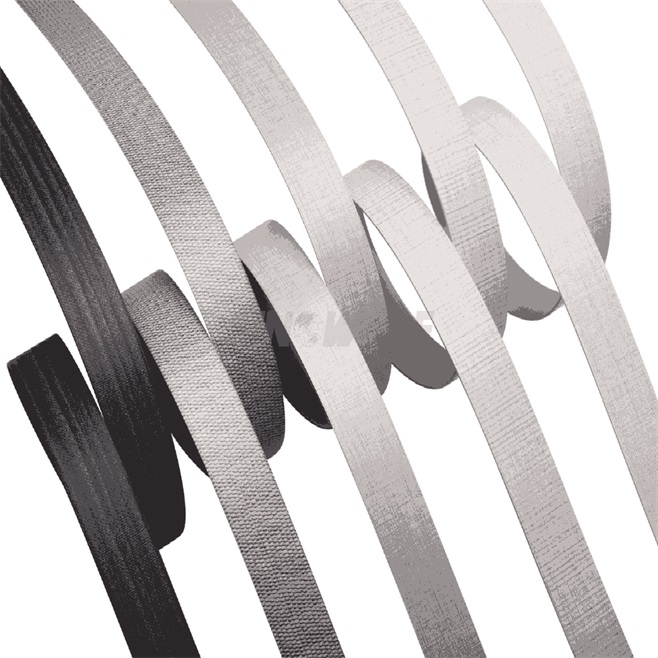Laser and Hot Air Edge Banding: Technologies for Modern Furniture Manufacturing
1. Laser Edge Banding Technology
Laser edge banding represents the cutting-edge in edge finishing technology, utilizing high-precision laser beams to bond edge materials to substrate surfaces. This process employs CO₂ lasers with wavelengths of 10.6μm or diode lasers at 808-980nm, delivering energy densities of 50-200 W/cm² for optimal bonding. The laser system achieves remarkable positioning accuracy of ±0.1 mm and processes edges at speeds up to 30 meters per minute.

Key Characteristics of Laser Edge Banding:
Precision bonding with seam widths as narrow as 0.2mm
Operates at temperatures up to 400°C for instantaneous bonding
Minimal thermal impact zone of 0.5-2mm
Compatible with edge materials from 0.4mm to 3mm thickness
Energy consumption of 3-8 kW depending on application
2. Hot Air Edge Banding Technology
Hot air edge banding utilizes precisely controlled heated air streams to activate thermoplastic adhesives on edge banding materials. Typical systems generate air temperatures between 180-450°C with flow rates of 20-60 m³/h. The technology achieves bonding pressures of 3-8 bar during the compression phase, with processing speeds ranging from 8-20 meters per minute depending on material thickness.
Key Characteristics of Hot Air Edge Banding:
Temperature control accuracy of ±5°C
Handles edge materials from 0.8mm to 10mm thickness
Pre-heating time of 15-30 minutes to reach operating temperature
Typical power consumption of 5-15 kW
Can process curved edges with radii as small as 15mm
3. Application Scenarios
Laser Edge Banding Applications:
High-end furniture manufacturing: Particularly for products requiring invisible seams and premium finishes, where laser technology achieves 97-99% seam invisibility.
Medical furniture: Where hygienic, seamless edges are critical for infection control.
Automotive interiors: For precise bonding of thin (0.4-1.2mm) decorative edges on dashboard and door panel components.
Electronic enclosures: Providing ESD-safe edges with resistance up to 10^9 ohms.
Hot Air Edge Banding Applications:
Kitchen cabinet production: Especially for thick (2-3mm) PVC or ABS edges on particleboard substrates.
Office furniture: Where production volumes of 500-2000 units/day require reliable, cost-effective edge finishing.
Retail fixtures: Accommodating diverse materials including wood veneers up to 0.6mm thickness.
DIY furniture: The technology's tolerance for substrate variations (up to ±0.5mm) makes it ideal for mass-market products.
4. Maintenance Procedures
Laser Edge Banding Maintenance:
Daily: Clean optical lenses with 99.9% pure isopropyl alcohol and lint-free wipes to maintain >95% light transmission.
Weekly: Inspect and calibrate laser alignment to ensure ±0.05mm beam positioning accuracy.
Monthly: Replace air filters and check cooling systems (maintaining water temperature at 20±2°C for CO₂ lasers).
Quarterly: Perform power output tests, verifying laser energy density remains within ±5% of specification.
Annually: Factory recalibration of all motion systems and laser parameters.
Hot Air Edge Banding Maintenance:
Daily: Remove adhesive buildup from heating nozzles using brass tools (never steel to prevent >0.1mm nozzle deformation).
Weekly: Verify temperature sensors accuracy within ±3°C using calibrated thermocouples.
Monthly: Inspect and clean air blower impellers, maintaining balance to 0.5g-cm tolerance.
Quarterly: Replace worn pressure rollers (typically after 250-300 operating hours).
Biannually: Complete system overhaul including electrical connections (torque all terminals to 2.5±0.3 Nm).
5. Operational Best Practices
For Laser Systems:
Maintain ambient temperature between 15-25°C and humidity 40-60% RH for optimal laser performance.
Implement 5-minute warm-up cycles for diode lasers to stabilize output.
Use only edge materials with laser-specific adhesive systems (typically requiring 80-120 J/cm² activation energy).
For Hot Air Systems:
Allow 20-minute temperature stabilization after initial heat-up.
Adjust air flow rates based on edge thickness - typically 30 m³/h for 1mm edges, increasing by 5 m³/h per additional mm.
Monitor adhesive melt patterns - ideal bonding shows 0.3-0.5mm adhesive squeeze-out.






